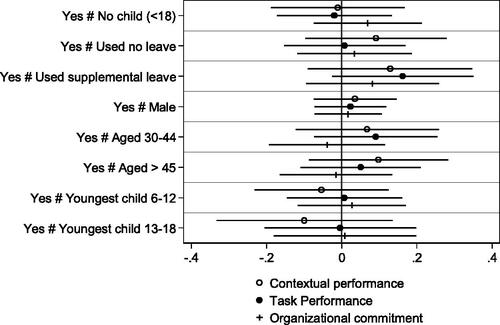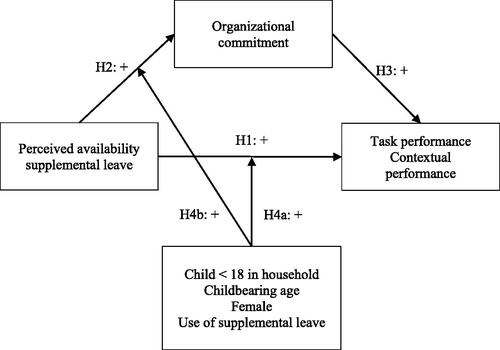Figures & data
Table 1. Rotated factor loadings and unique variances of performance commitment items.
Table 2. Descriptive statistics.
Table 3. Multilevel regression results from path model simultaneously predicting performance and commitment by perceived availability of supplemental family leave provision and control variables.
Figure 2. Coefficient estimates (b) of mediating effect of commitment between availability of supplemental leave and performance and moderation by family leave use, sex, age of respondent and age of youngest child in the household.
Note: Unstandardized coefficients obtained from three-level random intercept path model simultaneously predicting contextual and task performance and commitment by availability of supplemental leave including all control variables from full model (see model 2, , n = 8,861).

Table 4. Estimates of effect of perceived supplemental family leave availability on contextual and task performance and organizational commitment per country (significant deviations from overall country mean are indicated in bold print).
Figure 3. Coefficient estimates (b) of interaction effects between perceived availability of supplemental leave (‘yes’) and family leave use, sex, age of respondent and age of youngest child in the household.
Note: Unstandardized coefficients obtained from three-level random intercept path model including all control variables from full model (see model 2, , n = 8,861). Main effects omitted from figure.


